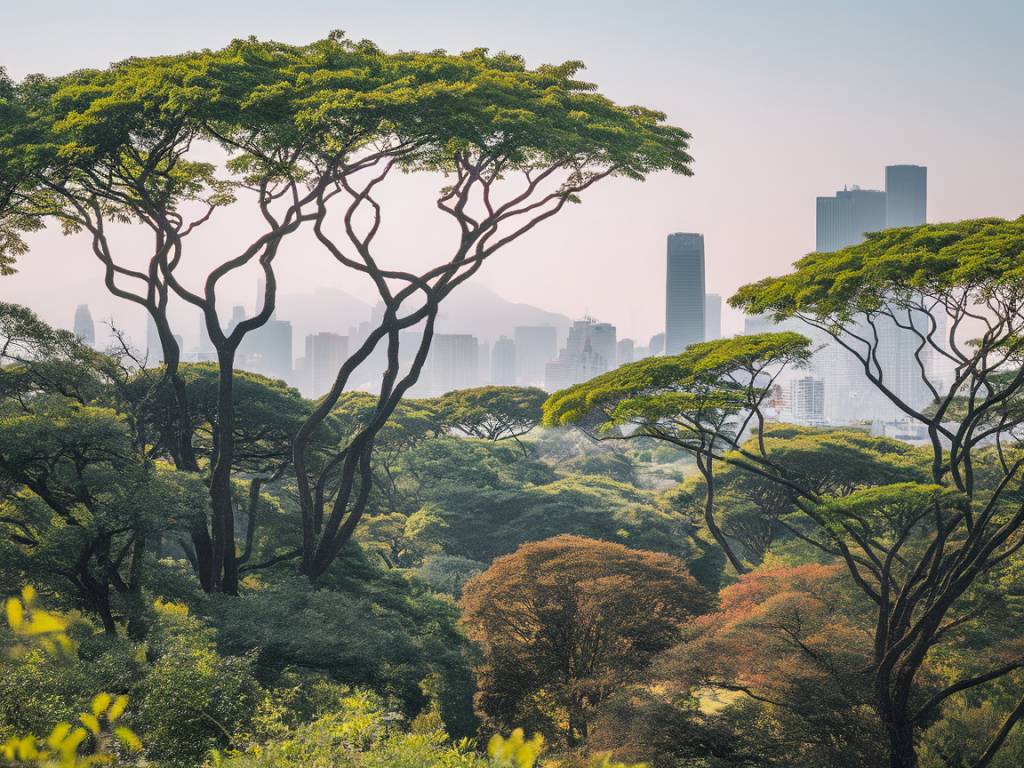Urbanization is a relentless force transforming landscapes across the globe, often lauded for its economic and social benefits. However, beneath the concrete and steel, a more somber narrative unfolds—one that brings into question the very survival of the world’s biodiversity. As cities expand, ecosystems contract, leading us into a precarious dance between progress and preservation.
The Urban Tsunami: A Growing Concern
In 2050, it’s expected that nearly 70% of the global population will reside in urban areas. With cities sprawling at unprecedented rates, what does this mean for the myriad forms of life that inhabit our planet? To visualize the impact, consider the Amazon rainforest—the world’s largest tropical rainforest. Its immense diversity of flora and fauna is increasingly hemmed in by burgeoning cities and agricultural encroachment. Urbanization is not merely a slow encroachment; it’s a deluge, sweeping away habitats and fragmenting ecosystems.
Fragmentation: The Silent Killer
When habitats are segmented by roads, buildings, and other urban structures, wildlife is forced into isolated pockets. This fragmentation disrupts migration patterns and genetic exchange among species, leading to weaker populations and reduced biodiversity. Imagine a mighty river split into trickling streams; each stream represents a fragmented habitat losing its capacity to sustain life. Species such as the Iberian lynx and the orangutan are already feeling the pressure, with their survival hanging by a thread.
Invasive Species: Unwanted Neighbors
Urban areas serve as gateways for invasive species to enter new ecosystems. Hitching rides on ships, planes, or even carried unwittingly by humans, these species outcompete native flora and fauna, often leading to devastating drops in biodiversity. Picture a garden overtaken by weeds; the native plants struggle to survive as the invasive species crowd them out and diminish their access to vital resources. The zebra mussel and the cane toad exemplify how these invaders can reshape entire ecosystems, leaving a trail of disruption in their wake.
The Pollution Problem
Pollution—be it air, water, or soil—accompanies urbanization like an unwelcome shadow. The byproducts of city life, if improperly managed, seep into ecosystems. This has far-reaching impacts on biodiversity, often pushing adaptable yet vulnerable species like amphibians to the brink. Imagine a vibrant coral reef, its colors dulled by pollutants and temperature changes induced by urban fossil fuel consumption. What was once a bustling underwater city brimming with life becomes a ghost town.
Success Stories: A Glimmer of Hope
Despite these challenges, there are successes worth noting. Innovative urban planning can actively contribute to biodiversity preservation. Green roofs, urban forests, and wildlife corridors are not merely amenities but vital lifelines for many species. Take Singapore, a city-state that has efficiently integrated nature into its urban fabric, boasting green spaces that serve as refuge for both wildlife and citizens seeking solace from the urban hustle. Could every city be a green city?
Furthermore, restoration projects such as the High Line in New York or the Cheonggyecheon Stream in Seoul illustrate how urban environments can be reclaimed and repurposed for ecological benefits. These projects show that it is possible to heal the wounds urbanization inflicts.
Actionable Steps Forward
If urbanization is a force of nature, then urban planning is humanity’s tool for balance. By investing in sustainable urban infrastructure and policies that prioritize ecological health, communities can help mitigate biodiversity loss.
Here’s how to turn concern into action:
- Incorporate biodiversity in urban planning: Design cities with green infrastructure that supports wildlife.
- Regulate and manage waste and emissions to minimize pollution entering natural habitats.
- Facilitate the creation of urban wildlife sanctuaries and corridors to connect fragmented habitats.
- Engage local communities through education and participation in conservation efforts.
While the challenges of urbanization are daunting, they are not insurmountable. Through thoughtful planning and collaboration, we can forge cities that coexist with the natural world, safeguarding our planet’s rich tapestry of life for future generations.
Urbanization may be an unstoppable wave, but with informed action and unwavering commitment, humanity holds the potential to ride this wave towards a sustainable and biodiverse future. So, let us ask ourselves—are we building future cities with nature as our partner, or as our rival?

